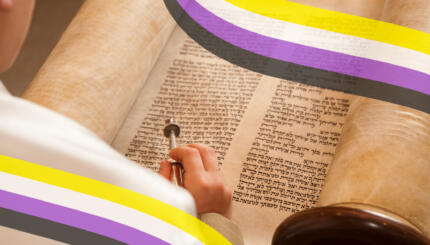Drake’s recent SNL skit (see below), perhaps unwittingly but then again perhaps not, highlighted how a bar or can deeply impact how a young person views his or her Jewish identity in the context of other identities. A bar or bat can be a defining moment in the development of one’s Jewish identity, but it can also feel like prioritizing one identity over others. Especially for the growing population of Jews from mixed racial, ethnic, religious and other backgrounds, the bar or bat mitzvah may be the first setting where the varied familial and sometimes non-familial influences of a young Jew come together under Jewish auspices. It can be a valuable opportunity to celebrate and honor the multiple elements of a child’s identity. One need not leave heritage at the door when stepping forward as a Jew. On the contrary, it is perhaps the best time to reassure young Jews that participation in Jewish life does not diminish any other aspects of one’s self.
Below is a list of some general suggestions on how a family or community might create multicultural b’nai mitzvah celebrations. These are general in nature and we would love to hear from families, clergy and communities that have found their own ways to engage multiple heritages.
Jewish Music from Ugandan Jews
Music: Jewish services rely on music and even the
is chanted. Most American synagogues rely on music that is either American, or European in origin. However, there are multitude of rich Jewish musical traditions representing the myriad of places there have been or are currently Jewish communities. Ask about learning to chant Torah in a different
nusach
or tune, or bring in
piyyutim
or prayers that represent a different Jewish cultural heritage. There is a long tradition of adapting secular tunes to sacred words. This can similarly be done to connect the songs of one culture with the prayers of Judaism.
Sasha Lifsitz celebrates becoming a wearing a Korean hanbok and a Jewish tallit.
Torah Study: Bar and Bat Mitzvah students usually share some insights into the weekly Torah portion. If your family traces origins to Spain, for example, ask your rabbi if there are any sources he or she can recommend that are Spanish or descended from Spanish Jews. Indian? Then draw on the wisdom of Indian Jewish tradition. Throughout the generations, rabbis have learned from the wisdom that lies beyond the Jewish community. Not specifically Jewish sources of wisdom can also be consulted in helping to shape or answer questions that will be addressed by the child in question.
Dress: Nowhere is it written that one must wear a suit or a dress and heels on the bimah. Kimonos, saris, or kilts are all perfectly acceptable for the child and the family members. Kippot can be made from any kind of material and look great in tartan, African cloth or Thai Batik. Similarly, tallitot, prayer shawls, can be made from any cloth as long as there are four corners with proper tzitzit knotted on each.
Language: English is not a sacred Jewish language. American Jews use English because it helps us understand the Hebrew -which is a sacred language, which most of us don’t know. So if your family speaks Korean, Amharic, or Flemish, send out multilingual invites or consider sharing some of the blessings in that language. Worried your guests won’t understand? Don’t be. Many don’t get the Hebrew either but we know from experience that they can find that meaningful.
Syrian Pastries
Food: There is nothing holy about lox and cream cheese. Kimchi or Jerk chicken are just as appropriate for a or for your party. If your caterer is unfamiliar with a dish that you hold dear, consider sharing some family recipes. Just check in with the synagogue that to be sure that what you are serving accords with the dietary policies.
Artwork: Art from another culture can be incorporated into the celebration in a variety of ways, on the invitation, the insert in the prayer books, as decorations in the synagogue or celebration hall. I attended a celebration at an Orthodox synagogue recently to find Japanese origami garlands festooned in the sanctuary to honor the mother’s culture. Let the creativity extend to flower or table arrangements as well.
Mitzvah Project: Many communities have made doing good works, Tikkun Olam, a part of the process of preparing for becoming bar or bat mitzvah. From collecting money for a project in a distant land to volunteering to help new immigrants from a familial country of origin, there are countless ways the bar or bat mitzvah can use their Mitzvah project to bridge the components of their identities.
http://youtu.be/zqTXwvo4MY0



